|
-S-
Sahara - "Sunrise" (Pan 1973)
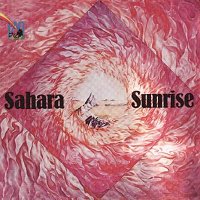 This German band was previously known as Subject Esq., and "Sunrise" was the first album under their new name Sahara. The band's sound was still quite energetic and powerful, and it the jazz-influence was taken a step further on this album. The opening track "Marie Celeste" opens very energetic, but most of the track is quite relaxed with a kind of jazzy-symphonic feel to it. The atmosphere of this song is wonderful, and it stands easily as the best track on the album. "Circles" is a catchy folk/country-influenced song that represents the less complex and progressive side of the band. "Rainbow Rider" is a decent progressive tune, but a little bit too traditional and generic to evolve into something really special. The 27-minute instrumental title-track takes up the whole of the second side, and is a somewhat messy piece that doesn't hang too well together. There are lots of good themes and riffs here, but the piece as a whole lacks continuous flow, and some of the quiet passages drag for too long. "Sunrise" showed a band with lots of ambitions and a sound of their own, but had still a few steps to go in the way they constructed their material. This German band was previously known as Subject Esq., and "Sunrise" was the first album under their new name Sahara. The band's sound was still quite energetic and powerful, and it the jazz-influence was taken a step further on this album. The opening track "Marie Celeste" opens very energetic, but most of the track is quite relaxed with a kind of jazzy-symphonic feel to it. The atmosphere of this song is wonderful, and it stands easily as the best track on the album. "Circles" is a catchy folk/country-influenced song that represents the less complex and progressive side of the band. "Rainbow Rider" is a decent progressive tune, but a little bit too traditional and generic to evolve into something really special. The 27-minute instrumental title-track takes up the whole of the second side, and is a somewhat messy piece that doesn't hang too well together. There are lots of good themes and riffs here, but the piece as a whole lacks continuous flow, and some of the quiet passages drag for too long. "Sunrise" showed a band with lots of ambitions and a sound of their own, but had still a few steps to go in the way they constructed their material.
Sahara - "For All the Clowns" (Ariola 1975)
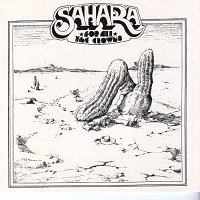 Their third and last album sacrificed some of their signature-sound in favour of clearer influences from other progressive rock bands, mainly Camel, Jethro Tull, Gentle Giant and Barclay James Harvest. But "For All the Clowns" was still their best album, as it featured their strongest and most consistent songwriting ever. The pop progressive opener "Flying Dancer" may make you a little bit doubtful at first listen, but it grows on you to be a really enjoyable and catchy track. "The Source" is a two-part track with a strong Barclay James Harvest/Pink Floyd feel. The first minutes of the title-track have some very obvious Gentle Giant-influences and sounds very beautiful and atmospheric. Then the track goes into a melodic part with guitar and organ very typical for this band. The last part of the track includes some cool and very German-sounding spacey synth-sounds. "The Mountain King" is a great 13-minute two-part suite with Tull-sounding flute, Gentle Giant-ish synths, mellotron and tons of great themes and parts. Every progressive rock fan will like this! "Dream Queen" can very well be their most beautiful track ever; with a wonderful melody and atmospheric flute that gradually gets more Tull-sounding at the end of the track. This is undoubtedly the album to get by this band. Their third and last album sacrificed some of their signature-sound in favour of clearer influences from other progressive rock bands, mainly Camel, Jethro Tull, Gentle Giant and Barclay James Harvest. But "For All the Clowns" was still their best album, as it featured their strongest and most consistent songwriting ever. The pop progressive opener "Flying Dancer" may make you a little bit doubtful at first listen, but it grows on you to be a really enjoyable and catchy track. "The Source" is a two-part track with a strong Barclay James Harvest/Pink Floyd feel. The first minutes of the title-track have some very obvious Gentle Giant-influences and sounds very beautiful and atmospheric. Then the track goes into a melodic part with guitar and organ very typical for this band. The last part of the track includes some cool and very German-sounding spacey synth-sounds. "The Mountain King" is a great 13-minute two-part suite with Tull-sounding flute, Gentle Giant-ish synths, mellotron and tons of great themes and parts. Every progressive rock fan will like this! "Dream Queen" can very well be their most beautiful track ever; with a wonderful melody and atmospheric flute that gradually gets more Tull-sounding at the end of the track. This is undoubtedly the album to get by this band.
Samurai - "Kappa" (Philips 1971)
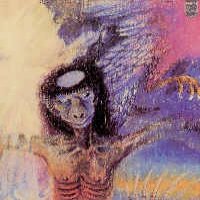 This was not the British band with Dave Lawson, but a Japanese one. They moved to Britain in the late 60's, and got a contract with Philips. They were also joined by several British members and released a couple of albums. "Kappa" from 1971 reveals a band in the heavy-progressive vein and with a thing for lengthy jams and improvisations. This is especially apparent on the instrumental 22-minute "King Riff and Snow Flakes" that takes up the whole of side 2. Heavy guitar and organ dominates the sound, and literally every musician in the group is allowed to stretch out. The first side is a lot more structured and song-oriented, although the 10-minute opener "Trauma" also features lengthy improvisations. "Same Old Reason" is a strong tune with harpsichord and nice themes. The ballad "Daredatta" is sung in Japanese and dominated by the flute of Miki Curtis. "Vision of Tomorrow" is a straightforward and traditional 70's hard rock song. Overall, quite solid and enjoyable stuff if you're into early 70's heavy progressive rock with lengthy solos and instrumental passages This was not the British band with Dave Lawson, but a Japanese one. They moved to Britain in the late 60's, and got a contract with Philips. They were also joined by several British members and released a couple of albums. "Kappa" from 1971 reveals a band in the heavy-progressive vein and with a thing for lengthy jams and improvisations. This is especially apparent on the instrumental 22-minute "King Riff and Snow Flakes" that takes up the whole of side 2. Heavy guitar and organ dominates the sound, and literally every musician in the group is allowed to stretch out. The first side is a lot more structured and song-oriented, although the 10-minute opener "Trauma" also features lengthy improvisations. "Same Old Reason" is a strong tune with harpsichord and nice themes. The ballad "Daredatta" is sung in Japanese and dominated by the flute of Miki Curtis. "Vision of Tomorrow" is a straightforward and traditional 70's hard rock song. Overall, quite solid and enjoyable stuff if you're into early 70's heavy progressive rock with lengthy solos and instrumental passages
Samurai - "Samurai" (Greenwich 1971)
 An obscure treasure from the british progressive rock scene. Samurai (which went under the name Web before this album) played progressive rock of the less pretensious kind. If you can imagine King Crimson`s "Pictures of a City" with organ, flute and lots of vibraphone added and with a more mellow touch, then you got a clue how this band sounded. What really gave Samurai a sound of their own was their use of vibraphone. While most other prog bands just used it as a solo instrument, Samurai used it as a integrated part of their sound. Amongst the members in the band was also future Greenslade member Dave Lawson, who sings in a much more pleasant way here than he often did in Greenslade. The songwriting is excellent, and there`s not a bad track on the album. The real highlight for me anyway, is "As I Dried the Tears Away". With its mellow vocal parts, relaxed vibraphone theme, and an absolutely beautiful theme in the middle, this track is a masterpiece in itself. Do yourself a favour and get this album. An obscure treasure from the british progressive rock scene. Samurai (which went under the name Web before this album) played progressive rock of the less pretensious kind. If you can imagine King Crimson`s "Pictures of a City" with organ, flute and lots of vibraphone added and with a more mellow touch, then you got a clue how this band sounded. What really gave Samurai a sound of their own was their use of vibraphone. While most other prog bands just used it as a solo instrument, Samurai used it as a integrated part of their sound. Amongst the members in the band was also future Greenslade member Dave Lawson, who sings in a much more pleasant way here than he often did in Greenslade. The songwriting is excellent, and there`s not a bad track on the album. The real highlight for me anyway, is "As I Dried the Tears Away". With its mellow vocal parts, relaxed vibraphone theme, and an absolutely beautiful theme in the middle, this track is a masterpiece in itself. Do yourself a favour and get this album.
Sandrose - "Sandrose" (Polydor 1972)
 A highly acclaimed album of French symphonic progressive rock. The sound of Sandrose was dominated by mellotron, organ, guitar and the voice of Rose Podwojny. Very beautiful and symphonic, and I think the album will appeal to most progressive rock fans. The highlight of the album is the 11-minute jam "Underground Session". A terrific track loaded with excellent mellotron, organ, guitar and vocal-harmonies. This track reminds me a lot of Earth and Fire. Other good tracks includes "Vision", "Never Good at Sayin' Good-Bye", "To Take Him Away" and "Summer is Yonder". Ok, that's almost all of them! The only weak spot is "Old Dome is Dead", a rather repetitive and tedious track. If you like Earth and Fire, you'll surely like this album. Although, if you're not familiar with French-progressive yet, you should better check out Ange's "Au Dela Du Delire" first. A highly acclaimed album of French symphonic progressive rock. The sound of Sandrose was dominated by mellotron, organ, guitar and the voice of Rose Podwojny. Very beautiful and symphonic, and I think the album will appeal to most progressive rock fans. The highlight of the album is the 11-minute jam "Underground Session". A terrific track loaded with excellent mellotron, organ, guitar and vocal-harmonies. This track reminds me a lot of Earth and Fire. Other good tracks includes "Vision", "Never Good at Sayin' Good-Bye", "To Take Him Away" and "Summer is Yonder". Ok, that's almost all of them! The only weak spot is "Old Dome is Dead", a rather repetitive and tedious track. If you like Earth and Fire, you'll surely like this album. Although, if you're not familiar with French-progressive yet, you should better check out Ange's "Au Dela Du Delire" first.
Schicke, Führs, Fröhling - "Symphonic Pictures" (Brain 1976)
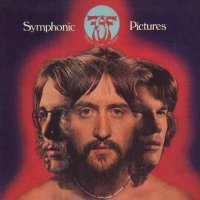 The trio of Eduard Schicke, Gerd Führs and Heinz Fröhling recorded some of the best symphonic progressive rock that ever has come from Germany. Their first and undoubtedly best album "Symphonic Pictures" is a classic that any self-respecting progressive rock fan should have in his collection. Musically they played a very symphonic and instrumental kind of progressive rock where the keyboards (especially Mellotron and Moog) had the main role. All three members played keyboards, but Fröhling also contributed with guitar and Schicke with a wide variety of percussions. The opening track "Tao" sets the mood and sound very well for the rest of the album. The arrangements are beautiful and atmospheric; the same goes for the many complex themes and melodies. "Solution" and "Sundrops" are shorter and quirky tracks with lots of clavinet, while "Dialog" starts as a typical Mellotron-drenched symphonic progressive rock instrumental before shifting into a more German-sounding part after a while. But the highlight of the record is the fantastic 16-minute "Pictures" that features some of the best and most creative Mellotron-playing you'll ever hear. Many of the themes from this track were unfortunately pathetically ripped of by Änglagård 16 years later for use in "their" "Jordrök", and it's about time that the actual composers get the credits they deserve for it (that's just one of the many reasons for getting "Symphonic Pictures" as fast as you can!). This is undoubtedly one of the best debuts from a German progressive rock band. The trio of Eduard Schicke, Gerd Führs and Heinz Fröhling recorded some of the best symphonic progressive rock that ever has come from Germany. Their first and undoubtedly best album "Symphonic Pictures" is a classic that any self-respecting progressive rock fan should have in his collection. Musically they played a very symphonic and instrumental kind of progressive rock where the keyboards (especially Mellotron and Moog) had the main role. All three members played keyboards, but Fröhling also contributed with guitar and Schicke with a wide variety of percussions. The opening track "Tao" sets the mood and sound very well for the rest of the album. The arrangements are beautiful and atmospheric; the same goes for the many complex themes and melodies. "Solution" and "Sundrops" are shorter and quirky tracks with lots of clavinet, while "Dialog" starts as a typical Mellotron-drenched symphonic progressive rock instrumental before shifting into a more German-sounding part after a while. But the highlight of the record is the fantastic 16-minute "Pictures" that features some of the best and most creative Mellotron-playing you'll ever hear. Many of the themes from this track were unfortunately pathetically ripped of by Änglagård 16 years later for use in "their" "Jordrök", and it's about time that the actual composers get the credits they deserve for it (that's just one of the many reasons for getting "Symphonic Pictures" as fast as you can!). This is undoubtedly one of the best debuts from a German progressive rock band.
Schicke, Führs, Fröhling - "Sunburst" (Brain 1977)
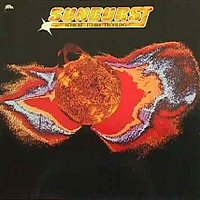 The trio's second album is a bit more varied in sound and mood compared to their otherwise stronger debut. The opener "Wizzard" is a surprisingly jazzy and energetic track with an impressively tight performance from the whole trio. "Autumn Sun in Cold Water" has a sound and atmosphere that points toward the style that Führs and Fröhling later would explore on their own after Schicke left the group a year later. "Artificial Energy" is very close to being a pure Jade Warrior-clone. Fröhling even imitates Tony Duhig's guitar sound with frightening accuracy. The best track on the album is the mighty "Troja", and not surprisingly the one that has most in common with the debut. "Driftin'" also maintains a tradition from the debut by incorporating lots of clavinet into a short track that somewhat differs a bit from the rest of the record. The weakest track is probably "1580" that sounds a bit half-baked and unfinished in my ears. The closer "Explorer" starts almost as some kind of electronic progressive rock, but turns toward the end into full-blown symphonic progressive rock with tons of Mellotron. "Sunburst" is overall not in the same class as "Symphonic Pictures", but it's still a very good and strong album on its own. The trio's second album is a bit more varied in sound and mood compared to their otherwise stronger debut. The opener "Wizzard" is a surprisingly jazzy and energetic track with an impressively tight performance from the whole trio. "Autumn Sun in Cold Water" has a sound and atmosphere that points toward the style that Führs and Fröhling later would explore on their own after Schicke left the group a year later. "Artificial Energy" is very close to being a pure Jade Warrior-clone. Fröhling even imitates Tony Duhig's guitar sound with frightening accuracy. The best track on the album is the mighty "Troja", and not surprisingly the one that has most in common with the debut. "Driftin'" also maintains a tradition from the debut by incorporating lots of clavinet into a short track that somewhat differs a bit from the rest of the record. The weakest track is probably "1580" that sounds a bit half-baked and unfinished in my ears. The closer "Explorer" starts almost as some kind of electronic progressive rock, but turns toward the end into full-blown symphonic progressive rock with tons of Mellotron. "Sunburst" is overall not in the same class as "Symphonic Pictures", but it's still a very good and strong album on its own.
Schicke, Führs, Fröhling - "Ticket to Everywhere" (Brain 1978)
 The third and final album from these three German gentlemen is also their least good one. The main reason for this was a turn toward a slightly colder and more mechanic sound where the Mellotron was toned considerably down. The album also seemed to have some kind of a badly executed concept that was meant to take the listener to various different places on earth, such as India and Spain. Influences from other artists also started to become clearer. The opener "Open Doors" sounds quite a lot like Gordon Giltrap from his golden era, while parts of "Here and Now" is reminiscent of late 70's Ashra. The inclusion of vocals on both the latter one and the disco-inflected "Song from India" were in my opinion not a very good idea. "Spain Span Spanish" mixes flamenco with electronic progressive rock, and the result is quite catchy although a bit quasi. The hypnotic "Slow Motion" is typical late 70's German progressive rock of the dreamy kind. "Folk'n'Roll" is not surprisingly quite a bit folk-influenced, while the title-track perhaps is the weakest thing the trio ever released. The album itself is still not bad at all, but I would recommend strongly that "Symphonic Pictures" is the first album you get by Schicke, Führs, Fröhling. The third and final album from these three German gentlemen is also their least good one. The main reason for this was a turn toward a slightly colder and more mechanic sound where the Mellotron was toned considerably down. The album also seemed to have some kind of a badly executed concept that was meant to take the listener to various different places on earth, such as India and Spain. Influences from other artists also started to become clearer. The opener "Open Doors" sounds quite a lot like Gordon Giltrap from his golden era, while parts of "Here and Now" is reminiscent of late 70's Ashra. The inclusion of vocals on both the latter one and the disco-inflected "Song from India" were in my opinion not a very good idea. "Spain Span Spanish" mixes flamenco with electronic progressive rock, and the result is quite catchy although a bit quasi. The hypnotic "Slow Motion" is typical late 70's German progressive rock of the dreamy kind. "Folk'n'Roll" is not surprisingly quite a bit folk-influenced, while the title-track perhaps is the weakest thing the trio ever released. The album itself is still not bad at all, but I would recommend strongly that "Symphonic Pictures" is the first album you get by Schicke, Führs, Fröhling.
Klaus Schulze - "Irrlicht" (Ohr 1972)
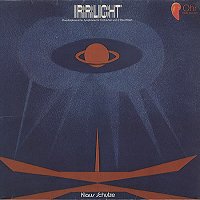 After leaving both Tangerine Dream and Ashra Tempel after just one album, Schulze finally realised that a solo career would suit him best. His solo-debut is a classic and typical example of early German space-progressive electronic music. Schulze himself called the album a "quadrophonische symphonie für orchester und e-maschinen", and that sums the album quite well up. The record was divided into three movements: "Ebene", "Gewitter" and "Exil Sils Maria". The 23-minute opener "Ebene" is probably the best of the three, and is very representative of early Schulze. Organs and other electronics are used to create a floating, atmospheric, warm and spacey sound texture. On the early albums Schulze did also use an orchestra that was mixed in a way that made it sound like a mellotron. The music of Schulze is usually quite stationary and demands a lot of patience and interest from the listener. However, if you're in the right mood, then Schulze's best albums will take you on an unforgettable, dreamy and hypnotic trip, and "Irrlicht" remains among his classic 70's releases. After leaving both Tangerine Dream and Ashra Tempel after just one album, Schulze finally realised that a solo career would suit him best. His solo-debut is a classic and typical example of early German space-progressive electronic music. Schulze himself called the album a "quadrophonische symphonie für orchester und e-maschinen", and that sums the album quite well up. The record was divided into three movements: "Ebene", "Gewitter" and "Exil Sils Maria". The 23-minute opener "Ebene" is probably the best of the three, and is very representative of early Schulze. Organs and other electronics are used to create a floating, atmospheric, warm and spacey sound texture. On the early albums Schulze did also use an orchestra that was mixed in a way that made it sound like a mellotron. The music of Schulze is usually quite stationary and demands a lot of patience and interest from the listener. However, if you're in the right mood, then Schulze's best albums will take you on an unforgettable, dreamy and hypnotic trip, and "Irrlicht" remains among his classic 70's releases.
Label
Klaus Schulze - "Cyborg" (Ohr 1973)
 Schulze's second album was a double one, consisting of four 25-minute long pieces of dark, sinister and spacey progressive electronics. You got to be quite a hardcore fan of this kind of progressive music to manage to listen through this monster in a row, but it would be ultimately rewarding if you are. The first track "Synphära" is a gloomy and sinister composition that sounds quite a bit Wagner-ish, and it's no big secret that Wagner is one of Schulze's favourite composers. "Conphära" is based on a flowing carpet of electronic sound with improvisations by a mellotron-sounding orchestra on top of it. "Chromengel" is a beautiful track with spacey electronic sounds built around a floating and warm organ. "Neuronengesang" is probably the spaceiest track on the record, with lots of primitive spacey electronic sounds that surrounds the orchestral improvisations. "Cyborg" is a monumental slice of early German progressive electronic music in its heaviest form. Schulze's second album was a double one, consisting of four 25-minute long pieces of dark, sinister and spacey progressive electronics. You got to be quite a hardcore fan of this kind of progressive music to manage to listen through this monster in a row, but it would be ultimately rewarding if you are. The first track "Synphära" is a gloomy and sinister composition that sounds quite a bit Wagner-ish, and it's no big secret that Wagner is one of Schulze's favourite composers. "Conphära" is based on a flowing carpet of electronic sound with improvisations by a mellotron-sounding orchestra on top of it. "Chromengel" is a beautiful track with spacey electronic sounds built around a floating and warm organ. "Neuronengesang" is probably the spaceiest track on the record, with lots of primitive spacey electronic sounds that surrounds the orchestral improvisations. "Cyborg" is a monumental slice of early German progressive electronic music in its heaviest form.
Klaus Schulze - "Picture Music" (Brain 1973)
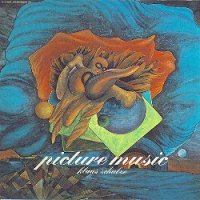 The third album was recorded and finished later the same year as "Cyborg", and showed an artist who evolved and improved at an impressive rate. This was the first album where Schulze began to use ordinary synthesisers and where he also began to incorporate rhythms in his music. The opener "Totem" is a pleasant cosmic journey of pulsating electronic rhythms with a very spacey synthesiser on top. "Mental Door" was probably Schulze's most varied track so far. It starts with a floating, spacey and relaxed part that turns into some energetic and powerful improvisations on the moog. At the end the whole track slows down to a very relaxing and beautiful part with great atmosphere. The track also features some drums to great effect. Alan White is thanked on the cover, so it's probably he who was responsible for the drumming. "Picture Music" represented the first steps toward the more rhythmic sound that Schulze would further explore and develop on the following albums. The third album was recorded and finished later the same year as "Cyborg", and showed an artist who evolved and improved at an impressive rate. This was the first album where Schulze began to use ordinary synthesisers and where he also began to incorporate rhythms in his music. The opener "Totem" is a pleasant cosmic journey of pulsating electronic rhythms with a very spacey synthesiser on top. "Mental Door" was probably Schulze's most varied track so far. It starts with a floating, spacey and relaxed part that turns into some energetic and powerful improvisations on the moog. At the end the whole track slows down to a very relaxing and beautiful part with great atmosphere. The track also features some drums to great effect. Alan White is thanked on the cover, so it's probably he who was responsible for the drumming. "Picture Music" represented the first steps toward the more rhythmic sound that Schulze would further explore and develop on the following albums.
Klaus Schulze - "Black Dance" (Brain 1974)
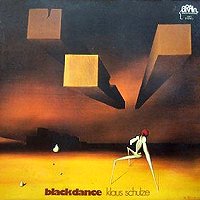 Schulze continued to experiment with rhythms on "Black Dance" but the result was far less successful than on the previous album. "Ways of Changes" opened in a promising way with a moody and mystical synth that soon was joined by an acoustic guitar. The track then went into a rhythmic part with tablas and a primitive drum-machine that laid the foundation for the usual electronic improvisations. But personally I don't think it works very well. The track seems pointless and fails to create any engaging atmosphere, and that's the most important thing in this music. "Some Velvet Phasing" is eight minutes of spacey and minimalist improvisations that works good, although he has done this stuff better. Side 2 was taken up by the 23-minute "Voices of Syn" that in my opinion is the most boring track Schulze ever did in the 70's. It starts with a tedious operatic intro that drags on until I fell asleep, and the rest of the track consists of a cheesy and repetitive rhythm that gets too much in front of the sound. This makes it hard for the listener to focus on the improvisations that lies under it. "Black Dance" is a failed experiment, and is for Schulze-completists only. Schulze continued to experiment with rhythms on "Black Dance" but the result was far less successful than on the previous album. "Ways of Changes" opened in a promising way with a moody and mystical synth that soon was joined by an acoustic guitar. The track then went into a rhythmic part with tablas and a primitive drum-machine that laid the foundation for the usual electronic improvisations. But personally I don't think it works very well. The track seems pointless and fails to create any engaging atmosphere, and that's the most important thing in this music. "Some Velvet Phasing" is eight minutes of spacey and minimalist improvisations that works good, although he has done this stuff better. Side 2 was taken up by the 23-minute "Voices of Syn" that in my opinion is the most boring track Schulze ever did in the 70's. It starts with a tedious operatic intro that drags on until I fell asleep, and the rest of the track consists of a cheesy and repetitive rhythm that gets too much in front of the sound. This makes it hard for the listener to focus on the improvisations that lies under it. "Black Dance" is a failed experiment, and is for Schulze-completists only.
Klaus Schulze - "Timewind" (Brain 1975)
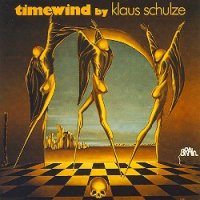 "Timewind" became Schulze's breakthrough, and it was a major step in the right direction after the failure of "Black Dance". It was made up of two 30-minute tracks that demonstrated both sides of Schulze's personality. "Bayreuth Return" is one of his most hypnotic tracks ever, consisting of soft electronic rhythmic patterns that slowly changes pace and builds carefully over and into each other. This track will have an almost trance-like effect on you if you're in the right mood. This is classic 70's electronic progressive music as good as it gets. "Wahnfried 1883" features on the other hand no rhythms at all. Instead it focuses on long, slow, sweeping and floating sounds that creates a monumental wall of spacey and atmospheric sound. Perfect music to just float along and dream to. "Timewind" was easily Schulze's best and most consistent release to this point. "Timewind" became Schulze's breakthrough, and it was a major step in the right direction after the failure of "Black Dance". It was made up of two 30-minute tracks that demonstrated both sides of Schulze's personality. "Bayreuth Return" is one of his most hypnotic tracks ever, consisting of soft electronic rhythmic patterns that slowly changes pace and builds carefully over and into each other. This track will have an almost trance-like effect on you if you're in the right mood. This is classic 70's electronic progressive music as good as it gets. "Wahnfried 1883" features on the other hand no rhythms at all. Instead it focuses on long, slow, sweeping and floating sounds that creates a monumental wall of spacey and atmospheric sound. Perfect music to just float along and dream to. "Timewind" was easily Schulze's best and most consistent release to this point.
Klaus Schulze - "Moondawn" (Brain 1976)
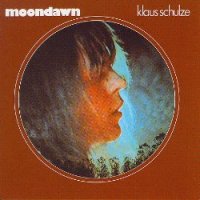 "Moondawn" is for most people one of Schulze's seminal and defenitive albums. Just as "Timewind" it consisted of two nearly 30-minute pieces, but with a thicker, richer and much more powerful sound than on any of his earlier albums. The first of the two pieces is called "Floating" and it has an atmosphere that perfectly fits the title of the album. It starts with some mysterious massing surrounded by spacey electronic sounds. It then glides into a part with gloomy, bell-like sounds and a floating string-synth that builds up to the rhythmic part of the track. Another important feature on this album was the inclusion of Harald Grosskopf on drums. His playing is greatly integrated in the music, and doesn't sound like a foreign element at all as you may could expect. The other track is called "Mindphaser". The first 11-12 minutes of this track is very beautiful and emotional. The atmosphere and sound is quite similar to "Wahnfried 1883" from the former album, but even better. The rest of the track consists of a powerful part with lots of spacey sounds and moog-solos built around a floating organ and more excellent drumming from Grosskopf. I think the drums add a stronger element of rock into the music, and would distinguish Schulze from many other electronic progressive artists. Highly recommended. "Moondawn" is for most people one of Schulze's seminal and defenitive albums. Just as "Timewind" it consisted of two nearly 30-minute pieces, but with a thicker, richer and much more powerful sound than on any of his earlier albums. The first of the two pieces is called "Floating" and it has an atmosphere that perfectly fits the title of the album. It starts with some mysterious massing surrounded by spacey electronic sounds. It then glides into a part with gloomy, bell-like sounds and a floating string-synth that builds up to the rhythmic part of the track. Another important feature on this album was the inclusion of Harald Grosskopf on drums. His playing is greatly integrated in the music, and doesn't sound like a foreign element at all as you may could expect. The other track is called "Mindphaser". The first 11-12 minutes of this track is very beautiful and emotional. The atmosphere and sound is quite similar to "Wahnfried 1883" from the former album, but even better. The rest of the track consists of a powerful part with lots of spacey sounds and moog-solos built around a floating organ and more excellent drumming from Grosskopf. I think the drums add a stronger element of rock into the music, and would distinguish Schulze from many other electronic progressive artists. Highly recommended.
Klaus Schulze - "Body Love" (Brain 1977)
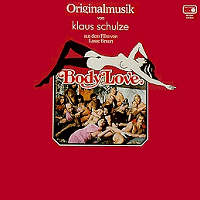 This soundtrack from one of Lasse Braun's porn movies(!!) was the very first where Schulze would use the Mellotron. Schulze favoured the choir-sound instead of the more commonly used string-sound of the mellotron, and this could be heard right away on the opener "Stardancer". The track featured energetic rhythms by Schulze's synths and Harald Grosskop's drumming, surrounded by improvisations with meaty and powerful synth-sounds upon a carpet of Mellotron. "Blanche" is easily one of the most beautiful moments in Schulze's catalogue. It opens with a very quiet and atmospheric piano that leads into a soft and slow electronic rhythm with some touchingly beautiful synth-solos on top. For the first time since "Black Dance" this was an album that featured as much as three tracks, and the second side was taken up by "P.T.O.". This track was Schulze at his best and most typical, with lots of hypnotic electronic rhythms that seemed to go on forever, and the mellotron was again adding a new dimension to Schulze's music that completed his classic sound. This soundtrack from one of Lasse Braun's porn movies(!!) was the very first where Schulze would use the Mellotron. Schulze favoured the choir-sound instead of the more commonly used string-sound of the mellotron, and this could be heard right away on the opener "Stardancer". The track featured energetic rhythms by Schulze's synths and Harald Grosskop's drumming, surrounded by improvisations with meaty and powerful synth-sounds upon a carpet of Mellotron. "Blanche" is easily one of the most beautiful moments in Schulze's catalogue. It opens with a very quiet and atmospheric piano that leads into a soft and slow electronic rhythm with some touchingly beautiful synth-solos on top. For the first time since "Black Dance" this was an album that featured as much as three tracks, and the second side was taken up by "P.T.O.". This track was Schulze at his best and most typical, with lots of hypnotic electronic rhythms that seemed to go on forever, and the mellotron was again adding a new dimension to Schulze's music that completed his classic sound.
Klaus Schulze - "Mirage" (Brain 1977)
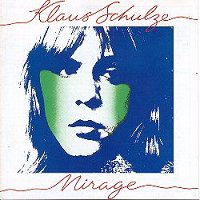 "Mirage" was the most low-key work of Schulze's best albums, and remains my favourite by him. There was no drums on the record, and with the exception of the first half of "Crystal Lake" there was also very few rhythmic parts to be found. Most of the album was instead based in slow, sweeping, mystical and dreamy soundscapes that conjured up images of snow-covered forests and icy winter-landscapes. And for the first time, the two long tracks were both divided into several sub-sections, but fortunately without any interruption between. Even if this is rather quiet and relaxing music, I still consider it to be very powerful and mighty. The mellotrons in the middle of "Velvet Voyage" sounds simply incredible. I've never heard the instrument being mixed in a more powerful and majestic way than this. "Crystal Lake" starts with a glockenspiel-like rhythmic theme that stands as the most hypnotic moment on the album. The track then slows down to a quiet part where Schulze delivers some of his most emotional and beautiful improvisations on the synth, before it all ends in a rhythmic climax that closes one of the best electronic progressive albums ever made. Essential. "Mirage" was the most low-key work of Schulze's best albums, and remains my favourite by him. There was no drums on the record, and with the exception of the first half of "Crystal Lake" there was also very few rhythmic parts to be found. Most of the album was instead based in slow, sweeping, mystical and dreamy soundscapes that conjured up images of snow-covered forests and icy winter-landscapes. And for the first time, the two long tracks were both divided into several sub-sections, but fortunately without any interruption between. Even if this is rather quiet and relaxing music, I still consider it to be very powerful and mighty. The mellotrons in the middle of "Velvet Voyage" sounds simply incredible. I've never heard the instrument being mixed in a more powerful and majestic way than this. "Crystal Lake" starts with a glockenspiel-like rhythmic theme that stands as the most hypnotic moment on the album. The track then slows down to a quiet part where Schulze delivers some of his most emotional and beautiful improvisations on the synth, before it all ends in a rhythmic climax that closes one of the best electronic progressive albums ever made. Essential.
Klaus Schulze - "X" (Brain 1978)
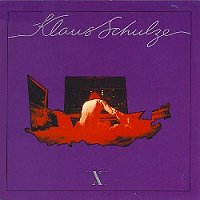 The monumental double album "X" had a kind of a concept where each of the tracks was dedicated to a historical person. The first one was "Friedrich Nietzsche", and marked the return of drums again. The track features lots of superb improvisations on the synths and mellotron, and as usual, it's the choir-sound that obviously was Schulze's favourite sound on the mellotron. "Georg Trakl" is only 5 minutes long (EXTREMELY short for a Schulze track!), but what a track! The sound reminds me a little of Tangerine Dream's "Statosfear" album. Very pleasant, relaxing and dreamy. "Frank Herbert" is another track that reminds a bit of Tangerine Dream, but the structure of the track is pure Schulze. "Friedemann Bach" is possibly one of the most sinister and gloomy tracks Schulze ever has recorded. It's based in a very simple electronic theme with a experimental and orchestral sound to it, featuring real strings. "Ludwik II. von Bayern" is an extremely impressive track that features even more strings. The electronics combined with the orchestra sounds unbelievable mighty and powerful. This track is the definitive proof of Schulze's compositional abilities. "Heinrich von Kleist" builds slowly up from some eerie and experimental electronic sounds and to a fantastic finale with more of the mellotron-choir accompanied by a thundering timpani. Music can't get more powerful and mighty than this. "X" is easily the most diverse and comprehensive of Schulze's classic albums, making it yet another one of his most essential releases. The monumental double album "X" had a kind of a concept where each of the tracks was dedicated to a historical person. The first one was "Friedrich Nietzsche", and marked the return of drums again. The track features lots of superb improvisations on the synths and mellotron, and as usual, it's the choir-sound that obviously was Schulze's favourite sound on the mellotron. "Georg Trakl" is only 5 minutes long (EXTREMELY short for a Schulze track!), but what a track! The sound reminds me a little of Tangerine Dream's "Statosfear" album. Very pleasant, relaxing and dreamy. "Frank Herbert" is another track that reminds a bit of Tangerine Dream, but the structure of the track is pure Schulze. "Friedemann Bach" is possibly one of the most sinister and gloomy tracks Schulze ever has recorded. It's based in a very simple electronic theme with a experimental and orchestral sound to it, featuring real strings. "Ludwik II. von Bayern" is an extremely impressive track that features even more strings. The electronics combined with the orchestra sounds unbelievable mighty and powerful. This track is the definitive proof of Schulze's compositional abilities. "Heinrich von Kleist" builds slowly up from some eerie and experimental electronic sounds and to a fantastic finale with more of the mellotron-choir accompanied by a thundering timpani. Music can't get more powerful and mighty than this. "X" is easily the most diverse and comprehensive of Schulze's classic albums, making it yet another one of his most essential releases.
Sebastian Hardie - "Four Moments" (Polydor 1975)
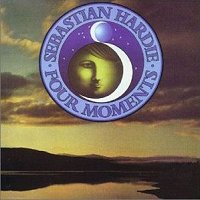 Sebastian Hardie was one of the very few symphonic progressive rock bands to come from Australia. They released two albums, and "Four Moments" was the first and best of them. Take elements of Yes, Genesis, Camel and some Focus, combine it with strong songwriting, outstanding musicianship and production. Then you've got exactly what makes up this album. The title-track is a 20-minute suite in four parts based in good and beautiful melodies and themes, played with the most delightful Mellotron-sound you can imagine. There's also lots of great guitar and moog-playing on this track. Side 2 of the album consisted of the two atmospheric instrumentals "Rosanna" and the lengthy "Openings" dominated by the very emotional, melodic and beautiful Akkerman/Latimer inspired guitar-playing by Mario Millo. "Four Moments" will be a sure winner with all symphonic progressive rock fans who likes the mentioned bands. Sebastian Hardie was one of the very few symphonic progressive rock bands to come from Australia. They released two albums, and "Four Moments" was the first and best of them. Take elements of Yes, Genesis, Camel and some Focus, combine it with strong songwriting, outstanding musicianship and production. Then you've got exactly what makes up this album. The title-track is a 20-minute suite in four parts based in good and beautiful melodies and themes, played with the most delightful Mellotron-sound you can imagine. There's also lots of great guitar and moog-playing on this track. Side 2 of the album consisted of the two atmospheric instrumentals "Rosanna" and the lengthy "Openings" dominated by the very emotional, melodic and beautiful Akkerman/Latimer inspired guitar-playing by Mario Millo. "Four Moments" will be a sure winner with all symphonic progressive rock fans who likes the mentioned bands.
Sebastian Hardie - "Windchase" (Polydor 1976)
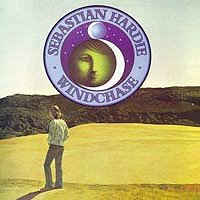 Sebastian Hardie's second and final album continued pretty much in the footsteps of the debut, although with slightly less memorable material. The title-track was again a 20-minute suite that took up the whole of the first side. And as you could expect, it features lots of tasteful guitar melodies from Millo, and lush symphonic keyboards from Toivo Pilt. But unlike the title-track of the previous album, it isn't divided into several movements, and seems maybe to glide more smoothly as one continuous piece. The second side features four tracks this time. "Life, Love and Music" is the only one of them to feature vocals, and is for me easily the best of them. "At the End" and "Peaceful" are both very laidback and atmospheric tracks, but a bit sketchy and seems to lack the strong melodies that characterized the instrumentals from the debut. The same goes for the more upbeat and energetic "Hello Phimistar". Still, "Windchase" is a fairly decent piece of typical mid-70's symphonic progressive rock, but be sure to check out "Four Moments" first. Sebastian Hardie's second and final album continued pretty much in the footsteps of the debut, although with slightly less memorable material. The title-track was again a 20-minute suite that took up the whole of the first side. And as you could expect, it features lots of tasteful guitar melodies from Millo, and lush symphonic keyboards from Toivo Pilt. But unlike the title-track of the previous album, it isn't divided into several movements, and seems maybe to glide more smoothly as one continuous piece. The second side features four tracks this time. "Life, Love and Music" is the only one of them to feature vocals, and is for me easily the best of them. "At the End" and "Peaceful" are both very laidback and atmospheric tracks, but a bit sketchy and seems to lack the strong melodies that characterized the instrumentals from the debut. The same goes for the more upbeat and energetic "Hello Phimistar". Still, "Windchase" is a fairly decent piece of typical mid-70's symphonic progressive rock, but be sure to check out "Four Moments" first.
Semiramis - "Dedicato A Frazz" (Trident 1973)
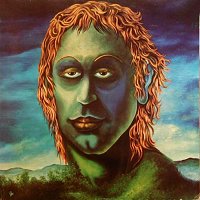 Another Italian goodie. "Dedicato A Frazz" was unfortunately Semiramis' first and only album, but it's sure a very good one and among the best from Italy. The tracks are usually just around 5 minutes each, but they are complex enough to satisfy most progressive rock fans. It's not easy to describe the sound of this band. They play symphonic progressive rock, often with a quite hard edge, but personally I wouldn't classify them as heavy-prog. Their keyboard sound is very typical Italian, and sounds very distinctive. The moog sound is especially tasteful. They also use some vibraphone to great effect on tracks like "La Bottega Del Rigattiere" and "Uno Zoo di Vetro". All of the seven tracks on the album are of a good quality, so there's no need to mention any favourite tracks here. The poor production is a weak spot, but the music is good. Another Italian goodie. "Dedicato A Frazz" was unfortunately Semiramis' first and only album, but it's sure a very good one and among the best from Italy. The tracks are usually just around 5 minutes each, but they are complex enough to satisfy most progressive rock fans. It's not easy to describe the sound of this band. They play symphonic progressive rock, often with a quite hard edge, but personally I wouldn't classify them as heavy-prog. Their keyboard sound is very typical Italian, and sounds very distinctive. The moog sound is especially tasteful. They also use some vibraphone to great effect on tracks like "La Bottega Del Rigattiere" and "Uno Zoo di Vetro". All of the seven tracks on the album are of a good quality, so there's no need to mention any favourite tracks here. The poor production is a weak spot, but the music is good.
Sensations' Fix - "Fragments of Light" (Polydor 1974)
 Classic space-progressive from Italy. All the tracks are rather short and most of them are instrumental. The band got some of the most wonderfully spacey-synth sounds I've ever heard. Just check out "Space Closure" and you'll hear. THIS is the way synths should sound! Other tracks like "Music is Paining in the Air" and the title-track also features guitars combined with the synths. "Nuclear War in Your Brain" and "Telepathic Children" are both space-rock at its most atmospheric and wonderful. One of the vocal tracks, "Space Energy Age" reminds me of Kingdom Come's excellent album "Journey". This is a very good album which most of the time sounds like absolutely no one else than Sensations' Fix. In fact, I would say this is one of the best space-progressive albums I've heard, and it's not even German! Classic space-progressive from Italy. All the tracks are rather short and most of them are instrumental. The band got some of the most wonderfully spacey-synth sounds I've ever heard. Just check out "Space Closure" and you'll hear. THIS is the way synths should sound! Other tracks like "Music is Paining in the Air" and the title-track also features guitars combined with the synths. "Nuclear War in Your Brain" and "Telepathic Children" are both space-rock at its most atmospheric and wonderful. One of the vocal tracks, "Space Energy Age" reminds me of Kingdom Come's excellent album "Journey". This is a very good album which most of the time sounds like absolutely no one else than Sensations' Fix. In fact, I would say this is one of the best space-progressive albums I've heard, and it's not even German!
Shylock - "Ile De Fièvre" (CBS 1978)
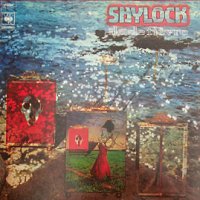 The second album from the French instrumental band Shylock is well regarded for its superb 13-minute title-track, while the rest of it is equally notoriously known for being little else than unfinished sketches sounding like a completely different band. But the title-track really IS an essential listen for anyone into classic 70's symphonic progressive rock at its best. It's an almost perfectly composed and structured complex piece based around outstanding melodies and playing. There's definitively a slight influence from Genesis to be heard here, especially in some of the keyboard passages, but overall the band managed to create a sound of their own. It's then quite weird that they didn't continue in this style for the rest of the album. Instead they went for something that occasionally sounds like a fusion-inflected King Crimson with compositions that are barely mediocre at best. "Le Sang Des Capucines" and the 10-minute closer "Laocksetal" are examples of this. The sound and playing style of guitarist Frédéric l'Épée is clearly influenced by Robert Fripp on these tracks. "Himogène" is a completely disposable fusion-jam, and "Lierre D'aujourd'hui" seems to have just as little purpose. "Chorale" is on the other hand a couple of minutes with some pleasant atmosphere. And that's pretty much it. "Ile De Fièvre" is an album hard to have a definitive opinion about, as it's so hair-raisingly divided in quality. Check out the title-track if you ever got the chance, but the rest is not worth much of your attention I'm afraid. The second album from the French instrumental band Shylock is well regarded for its superb 13-minute title-track, while the rest of it is equally notoriously known for being little else than unfinished sketches sounding like a completely different band. But the title-track really IS an essential listen for anyone into classic 70's symphonic progressive rock at its best. It's an almost perfectly composed and structured complex piece based around outstanding melodies and playing. There's definitively a slight influence from Genesis to be heard here, especially in some of the keyboard passages, but overall the band managed to create a sound of their own. It's then quite weird that they didn't continue in this style for the rest of the album. Instead they went for something that occasionally sounds like a fusion-inflected King Crimson with compositions that are barely mediocre at best. "Le Sang Des Capucines" and the 10-minute closer "Laocksetal" are examples of this. The sound and playing style of guitarist Frédéric l'Épée is clearly influenced by Robert Fripp on these tracks. "Himogène" is a completely disposable fusion-jam, and "Lierre D'aujourd'hui" seems to have just as little purpose. "Chorale" is on the other hand a couple of minutes with some pleasant atmosphere. And that's pretty much it. "Ile De Fièvre" is an album hard to have a definitive opinion about, as it's so hair-raisingly divided in quality. Check out the title-track if you ever got the chance, but the rest is not worth much of your attention I'm afraid.
Shaa Khan - "Anything Wrong?" (Sky 1979)
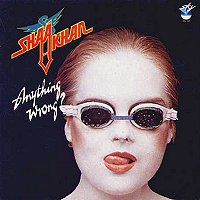 Shaa Khan were a fine German band who released a couple of albums in the late 70's. "Anything Wrong?" was their second and last one, and consisted of highly melodic, solid and accessible symphonic progressive rock. They sometimes tend to remind me a bit of Camel, especially on a track like "Once Upon A Time". Their sound also benefited from the presence of two good but very different vocalists. This can be heard best on "Howy the Professional" that is perhaps the best track on the whole album, and features some truly stunning melodies. The contrast between high-pitched falsetto and the much lower and more masculine growl is very striking. The harder rocking "Agonie" also makes good use of this. The keyboardist focuses mainly on organ and string-synths in a tasteful and intelligent manner. Some of his best passages can be heard in the title-track, that is an otherwise song-based tune with the strong melodies that characterizes most of the record. The band's overall sound is more British than German, and both vocalists sings in convincing English with little or no accent at all (very rare for German vocalists). "Another Fight" is yet another highlight, where the main melody is played on organ and sung by both singers simultaneously, and features a surprising flamenco break in the middle. The dramatic "Tales of Schroeder" is the longest and most complex track on the record, and probably also the least accessible, although that doesn't say much in the case of this album. The strong melodies and tasteful sound makes "Anything Wrong?" a winner with me, and I've no problems about recommending it to anyone with sense for good 70's symphonic progressive rock. Shaa Khan were a fine German band who released a couple of albums in the late 70's. "Anything Wrong?" was their second and last one, and consisted of highly melodic, solid and accessible symphonic progressive rock. They sometimes tend to remind me a bit of Camel, especially on a track like "Once Upon A Time". Their sound also benefited from the presence of two good but very different vocalists. This can be heard best on "Howy the Professional" that is perhaps the best track on the whole album, and features some truly stunning melodies. The contrast between high-pitched falsetto and the much lower and more masculine growl is very striking. The harder rocking "Agonie" also makes good use of this. The keyboardist focuses mainly on organ and string-synths in a tasteful and intelligent manner. Some of his best passages can be heard in the title-track, that is an otherwise song-based tune with the strong melodies that characterizes most of the record. The band's overall sound is more British than German, and both vocalists sings in convincing English with little or no accent at all (very rare for German vocalists). "Another Fight" is yet another highlight, where the main melody is played on organ and sung by both singers simultaneously, and features a surprising flamenco break in the middle. The dramatic "Tales of Schroeder" is the longest and most complex track on the record, and probably also the least accessible, although that doesn't say much in the case of this album. The strong melodies and tasteful sound makes "Anything Wrong?" a winner with me, and I've no problems about recommending it to anyone with sense for good 70's symphonic progressive rock.
Label
Sindelfingen - "Odgipig" (Medway 1973)
 This was to my knowledge the only album released by this British group while they still existed (I've heard of a live-album called "Triangle" but I don't know anything about it). The music on "Odgipig" is progressive rock with a slight folk-influence and long, complex tracks. The songwriting is good, and there are lots of interesting parts and themes in the tracks. So then this is just good?? Well, unfortunately not! My problem with this album is the arrangements. The only additional instrument to the basic drum, bass and guitar is a glockenspiel. You can may say that this sparse instrumentation gave the band a sound of their own, but in my opinion it don't explore the full potential of the compositions. What I'm trying to say is that the songs need richer and more powerful arrangements than this. If they had added some Mellotron, Hammond-organ and a better production, then this could really have been something! Not bad, but it could have been much better. This was to my knowledge the only album released by this British group while they still existed (I've heard of a live-album called "Triangle" but I don't know anything about it). The music on "Odgipig" is progressive rock with a slight folk-influence and long, complex tracks. The songwriting is good, and there are lots of interesting parts and themes in the tracks. So then this is just good?? Well, unfortunately not! My problem with this album is the arrangements. The only additional instrument to the basic drum, bass and guitar is a glockenspiel. You can may say that this sparse instrumentation gave the band a sound of their own, but in my opinion it don't explore the full potential of the compositions. What I'm trying to say is that the songs need richer and more powerful arrangements than this. If they had added some Mellotron, Hammond-organ and a better production, then this could really have been something! Not bad, but it could have been much better.
Skin Alley - "Skin Alley" (CBS 1969)
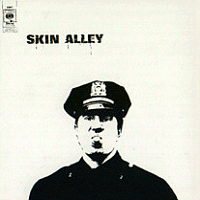 This band had members from both Britain and America, and delivered a promising debut-album that they unfortunately never were able to follow up in a convincing way. "Skin Alley" was an exceptionally good debut, and should have brought the band much more attention than they got. It included their two best-known songs: the Tull-ish "Living in Sin" and the beautiful, melodic "Tell Me". Both tracks featured strong melodies and the arrangements included lots of flute, Mellotron, organ and saxophone. The band's main influences were primarily classical music, jazz and early progressive rock, and all styles were nicely balanced on the album. "Country Aire" features harpsichord and flute that creates a medieval, baroque feel. The very short "Concerto Grosso (Take Heed)" was also clearly influenced by classical material. "Marsha" gives the band an opportunity to stretch out and show their most jazzy side. "Night Time" and the gloomy "All Alone" were two other strong tracks that further solidified the overall positive impression of the record. "Skin Alley" is an overlooked little gem, and undoubtedly the album to have by this group. This band had members from both Britain and America, and delivered a promising debut-album that they unfortunately never were able to follow up in a convincing way. "Skin Alley" was an exceptionally good debut, and should have brought the band much more attention than they got. It included their two best-known songs: the Tull-ish "Living in Sin" and the beautiful, melodic "Tell Me". Both tracks featured strong melodies and the arrangements included lots of flute, Mellotron, organ and saxophone. The band's main influences were primarily classical music, jazz and early progressive rock, and all styles were nicely balanced on the album. "Country Aire" features harpsichord and flute that creates a medieval, baroque feel. The very short "Concerto Grosso (Take Heed)" was also clearly influenced by classical material. "Marsha" gives the band an opportunity to stretch out and show their most jazzy side. "Night Time" and the gloomy "All Alone" were two other strong tracks that further solidified the overall positive impression of the record. "Skin Alley" is an overlooked little gem, and undoubtedly the album to have by this group.
Skin Alley - "To Pagham and Beyond" (CBS 1970)
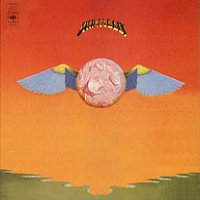 This was in my opinion not a worthy follow-up to their debut, and there are several reasons for that. The material is mediocre, the production is flat and several of the songs go on for longer than they're worth. The band's vocals worked fine on the debut, but they sounds rather weak and annoying here. The opener "Big Brother is watching you" is quite representative for the rest of the album's mediocrity. The strong melodies that characterized their debut are lacking. "Take Me to Your Leader's Daughter" features lots of tedious noodling in the middle of a forgettable and uninspired song. The version of Graham Bond's "Walking in the Park" is ok, but I still think Colosseum did the best version of this track. "The Queen of Bad Intensions" is easily the best track on the album, as it features a few glimpses a decent melody and some inspired instrumental passages. "Sweaty Betty" is a repetitive tune that sounds like a bad Chicago-clone, and is further weakened by a drum-solo. "To Pagham and Beyond" was a disappointment, so you should better stick with their excellent debut. Here's a bit of trivia for Norwegian readers: Skin Alley was one of the few foreign bands to play at the legendary Ragnarock festival in 1974. This was in my opinion not a worthy follow-up to their debut, and there are several reasons for that. The material is mediocre, the production is flat and several of the songs go on for longer than they're worth. The band's vocals worked fine on the debut, but they sounds rather weak and annoying here. The opener "Big Brother is watching you" is quite representative for the rest of the album's mediocrity. The strong melodies that characterized their debut are lacking. "Take Me to Your Leader's Daughter" features lots of tedious noodling in the middle of a forgettable and uninspired song. The version of Graham Bond's "Walking in the Park" is ok, but I still think Colosseum did the best version of this track. "The Queen of Bad Intensions" is easily the best track on the album, as it features a few glimpses a decent melody and some inspired instrumental passages. "Sweaty Betty" is a repetitive tune that sounds like a bad Chicago-clone, and is further weakened by a drum-solo. "To Pagham and Beyond" was a disappointment, so you should better stick with their excellent debut. Here's a bit of trivia for Norwegian readers: Skin Alley was one of the few foreign bands to play at the legendary Ragnarock festival in 1974.
Sky - "Sky" (Ariola 1979)
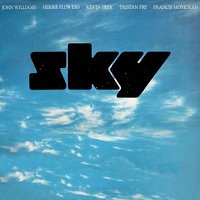 Sky was some sort of an instrumental progressive supergroup formed at the most unlikely moment in time: the height of the braindead punk-era. And even more surprising, their albums were commercially successful, as well as their concerts. The first and best line-up of the band consisted of guitarist John Williams and ex-Curved Air guitarist/keyboardist Francis Monkman in addition to Herbie Flowers on bass, Tristan Fry on drums and Kevin Peek on guitar. All of them were highly respected session musicians, and together they would create a technically very solid ensemble. Their polished instrumental music had a contemporary approach, but Williams' classical guitar and Monkman's harpsichord provided fine contrasts to the band's otherwise modern sound. Flowers' "Westway" opened their self-titled album with a rhythmic foundation of pulsating synths beneath a distinctive melody played in William's trademark tasty fashion. "Carillon" was yet another tune written by Flowers, and shows the band from their most atmospheric and laidback side, again dominated by Williams' moody acoustic guitar. The first cover on the album, Pipo's "Danza", is a folk-dance with a burst of harpsichords from Monkman in the middle. The second cover was a version of Eric Satie's well known theme from "Gymnopedie", and is naturally another showcase for the band's softest side. Monkman's "Cannonball" was the single from the album, and is a catchy tune in a similar style and sound to "Westway", although slightly faster. But the highlight of the LP was undoubtedly the 20-minute "Where Opposites Meet" that took up the whole second side, and was also composed by Monkman. This thoroughly enjoyable and involving piece evolves from an electronic progressive opening and moves into some of the finest themes and melodies the band ever delivered, before it ends with something that sounds suspiciously much like the theme from Mike Oldfield's "Tubular Bells". Sky's debut was the first of the band's two best albums, and its musical and commercial success proved that you didn't need to be an untalented, snotty brat to sell records even in 1979. Sky was some sort of an instrumental progressive supergroup formed at the most unlikely moment in time: the height of the braindead punk-era. And even more surprising, their albums were commercially successful, as well as their concerts. The first and best line-up of the band consisted of guitarist John Williams and ex-Curved Air guitarist/keyboardist Francis Monkman in addition to Herbie Flowers on bass, Tristan Fry on drums and Kevin Peek on guitar. All of them were highly respected session musicians, and together they would create a technically very solid ensemble. Their polished instrumental music had a contemporary approach, but Williams' classical guitar and Monkman's harpsichord provided fine contrasts to the band's otherwise modern sound. Flowers' "Westway" opened their self-titled album with a rhythmic foundation of pulsating synths beneath a distinctive melody played in William's trademark tasty fashion. "Carillon" was yet another tune written by Flowers, and shows the band from their most atmospheric and laidback side, again dominated by Williams' moody acoustic guitar. The first cover on the album, Pipo's "Danza", is a folk-dance with a burst of harpsichords from Monkman in the middle. The second cover was a version of Eric Satie's well known theme from "Gymnopedie", and is naturally another showcase for the band's softest side. Monkman's "Cannonball" was the single from the album, and is a catchy tune in a similar style and sound to "Westway", although slightly faster. But the highlight of the LP was undoubtedly the 20-minute "Where Opposites Meet" that took up the whole second side, and was also composed by Monkman. This thoroughly enjoyable and involving piece evolves from an electronic progressive opening and moves into some of the finest themes and melodies the band ever delivered, before it ends with something that sounds suspiciously much like the theme from Mike Oldfield's "Tubular Bells". Sky's debut was the first of the band's two best albums, and its musical and commercial success proved that you didn't need to be an untalented, snotty brat to sell records even in 1979.
Sky - "Sky 2" (Ariola 1980)
 Sky's career peaked with the release of their second record. The fact that this sprawling double album went straight to the top of the UK charts (not to mention that their fast and rocking version of Bach's "Toccata" also became a major hit) was probably the most frustrating and unexplainable enigma for any trendy music critic in 1980. Musically, the record further developed the formula of the debut, but now with more musical variation and even more space for each member of the group to stretch out. The third side of the album was even entirely dedicated to pure solo-pieces. Williams did several atmospheric and tasty acoustic adaptations of classical pieces, such as Praetorius' "Ballet-Volta" and "Andante" from Vivaldi's Concert in G for Mandolins. He also shows his undeniable talent for writing acoustic pieces on his own in "El Cielo". Monkman displays impressive skills on the harpsichord with "Gavotte & Variations" that he based on a piece by J.P. Rameau. "Tristan's Magic Garden" is one of the more creative and melodic (!) drum solos you'll hear. Flowers' "Tuba Smarties" (a tune that is unfortunately just as stupid as its title) and a rather unnecessary cover of Curved Air's cover (!) of Vivaldi are the only disposable moments on the record. "Hotta" is easily one of the band's very best tunes, based around a pleasant floating melody and surrounded by Monkman's bubbling and spacey keyboards. Together, these elements create an atmosphere that truly lives up to the name of the band. "Sahara" has, as you may be able to expect, some eastern-influences and is overall the band at their loudest and most powerful, although the more quite mid-part also shows the soft and moody side of them. And Monkman again delivered a 20-minute suite, this time in form of the four-part "Fifo". The piece is full of contrasts and tensions, both in mood and sound, and it never becomes boring from the first and slightly rocking (at least for these guys) part and to the majestic "Watching the Aeroplanes" that closes the suite. "Dance of the Little Fairies" is some kind of a cosy folk-dance written by Williams, and their earlier mentioned adaptation of Bach's "Toccata" quickly became their signature tune. Flowers' lengthy "Scipio" shows the band working very well together, and is slightly more cheerful than Monkman's long pieces, although less immediate. "Sky 2" is next to their debut Sky's most rewarding album, both in terms of quantity and quality. Sky's career peaked with the release of their second record. The fact that this sprawling double album went straight to the top of the UK charts (not to mention that their fast and rocking version of Bach's "Toccata" also became a major hit) was probably the most frustrating and unexplainable enigma for any trendy music critic in 1980. Musically, the record further developed the formula of the debut, but now with more musical variation and even more space for each member of the group to stretch out. The third side of the album was even entirely dedicated to pure solo-pieces. Williams did several atmospheric and tasty acoustic adaptations of classical pieces, such as Praetorius' "Ballet-Volta" and "Andante" from Vivaldi's Concert in G for Mandolins. He also shows his undeniable talent for writing acoustic pieces on his own in "El Cielo". Monkman displays impressive skills on the harpsichord with "Gavotte & Variations" that he based on a piece by J.P. Rameau. "Tristan's Magic Garden" is one of the more creative and melodic (!) drum solos you'll hear. Flowers' "Tuba Smarties" (a tune that is unfortunately just as stupid as its title) and a rather unnecessary cover of Curved Air's cover (!) of Vivaldi are the only disposable moments on the record. "Hotta" is easily one of the band's very best tunes, based around a pleasant floating melody and surrounded by Monkman's bubbling and spacey keyboards. Together, these elements create an atmosphere that truly lives up to the name of the band. "Sahara" has, as you may be able to expect, some eastern-influences and is overall the band at their loudest and most powerful, although the more quite mid-part also shows the soft and moody side of them. And Monkman again delivered a 20-minute suite, this time in form of the four-part "Fifo". The piece is full of contrasts and tensions, both in mood and sound, and it never becomes boring from the first and slightly rocking (at least for these guys) part and to the majestic "Watching the Aeroplanes" that closes the suite. "Dance of the Little Fairies" is some kind of a cosy folk-dance written by Williams, and their earlier mentioned adaptation of Bach's "Toccata" quickly became their signature tune. Flowers' lengthy "Scipio" shows the band working very well together, and is slightly more cheerful than Monkman's long pieces, although less immediate. "Sky 2" is next to their debut Sky's most rewarding album, both in terms of quantity and quality.
Sky - "Sky 3" (Ariola 1981)
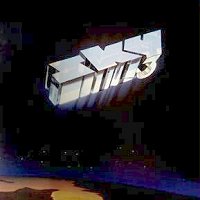 Francis Monkman left Sky after the second album, and his departure marked the end of the band's classic phase. But the band never the less decided to carry on, now with Steve Gray as their new keyboardist. Gray contributed with some material of his own on Sky's third album, including the funky and jazzy "Sister Rose" (the only track on the record where the band managed to do something that already hadn't been done on the two first albums) and the quiet "Hello". He also wrote "Meheeco" together with Flowers, a theme that slowly builds up from a slow and atmospheric piece and to a much more energetic, flamenco-like thing. Together with Peek's "Westwind", that was probably the best known track from the record, and both would became favourites live. "Chiropodie No. 1" and "Moonroof" are very similar to each other in sound and mood, and featured probably the most immediate melodies on the album. Fry is surprising a bit here by writing a complex and quite good composition called "Connecting Rooms". Flowers came up with a nice hymn that is here in no less than two different versions, while "Dance of the Big Fairies" just was more of the tuba-nonsense that he already had inflicted on the listeners with "Tuba Smarties" from the previous album. And there was only one classical adaptation here this time, namely Händel's "Sarabande". This harpsichord piece had been nicely adapted for classical guitar by Williams. Although I miss Monkman on this album, "Sky 3" is still far from bad, but casual listeners should rather start with the two first albums and then pick this up later if they want more of the same. Francis Monkman left Sky after the second album, and his departure marked the end of the band's classic phase. But the band never the less decided to carry on, now with Steve Gray as their new keyboardist. Gray contributed with some material of his own on Sky's third album, including the funky and jazzy "Sister Rose" (the only track on the record where the band managed to do something that already hadn't been done on the two first albums) and the quiet "Hello". He also wrote "Meheeco" together with Flowers, a theme that slowly builds up from a slow and atmospheric piece and to a much more energetic, flamenco-like thing. Together with Peek's "Westwind", that was probably the best known track from the record, and both would became favourites live. "Chiropodie No. 1" and "Moonroof" are very similar to each other in sound and mood, and featured probably the most immediate melodies on the album. Fry is surprising a bit here by writing a complex and quite good composition called "Connecting Rooms". Flowers came up with a nice hymn that is here in no less than two different versions, while "Dance of the Big Fairies" just was more of the tuba-nonsense that he already had inflicted on the listeners with "Tuba Smarties" from the previous album. And there was only one classical adaptation here this time, namely Händel's "Sarabande". This harpsichord piece had been nicely adapted for classical guitar by Williams. Although I miss Monkman on this album, "Sky 3" is still far from bad, but casual listeners should rather start with the two first albums and then pick this up later if they want more of the same.
Soft Machine - "Third" (CBS 1970)
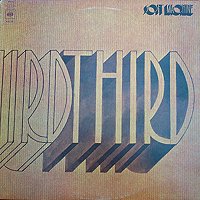 One of the first classics from the Canterbury scene. Soft Machine's third was a double album with one track on each side, and one of the best examples of jazz-influenced progressive rock. The album starts with a live-track called "Facelift". The first minutes includes some very powerful improvisations with the typical distorted Canterbury- organ sound. The rest of the group soon joins the piece, and plays a lot of catchy riffs and energetic improvisations. Stuffed with organ, sax and flute, this is the way jazz-influenced progressive rock is meant to sound. No trace of modern-sounding fusion here. "Slightly All the Time" is a more laidback track with great atmosphere. The flute part is especially beautiful. "Moon in June" is probably Soft Machine's best known track ever, and quite different from the rest of the album. The first ten minutes consists of a lot of nice melodies sung by the distinctive voice of Robert Wyatt to a arrangement of organ and drums. After that, the track turns into a very Canterbury-ish jam before the whole piece ends in a quite disharmonius and avant-garde way. The last track, "Out-Bloody-Rageous", goes back to the style of the two first tracks. Energetic and strongly jazz-influenced instrumental progressive rock with strong themes and inspired jams. A great album, and with no doubt Soft Machine's best work. One of the first classics from the Canterbury scene. Soft Machine's third was a double album with one track on each side, and one of the best examples of jazz-influenced progressive rock. The album starts with a live-track called "Facelift". The first minutes includes some very powerful improvisations with the typical distorted Canterbury- organ sound. The rest of the group soon joins the piece, and plays a lot of catchy riffs and energetic improvisations. Stuffed with organ, sax and flute, this is the way jazz-influenced progressive rock is meant to sound. No trace of modern-sounding fusion here. "Slightly All the Time" is a more laidback track with great atmosphere. The flute part is especially beautiful. "Moon in June" is probably Soft Machine's best known track ever, and quite different from the rest of the album. The first ten minutes consists of a lot of nice melodies sung by the distinctive voice of Robert Wyatt to a arrangement of organ and drums. After that, the track turns into a very Canterbury-ish jam before the whole piece ends in a quite disharmonius and avant-garde way. The last track, "Out-Bloody-Rageous", goes back to the style of the two first tracks. Energetic and strongly jazz-influenced instrumental progressive rock with strong themes and inspired jams. A great album, and with no doubt Soft Machine's best work.
Spring - "Spring" (Neon 1971)
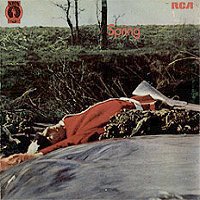 One of the best examples of the softer and less complex side of the Early British progressive style. Their one and only album is a mellotron-drenched (three mellotrons!!!) classic. The band used most of the sounds the mellotron can create (strings, flute, horns) and the arrangements will satisfy any fan of this heavenly instrument. But the songwriting is good too, so there's definitively more to this album than just the mellotron! Most of the songs are rather soft, melodic, romantic and atmospheric. My favourite track is "Golden Fleece" with its very powerful mellotron theme and a great solo part. "Grail" is another great track with beautiful flute-mellotron, and this is probably the most complex track on the album. "The Prisoner" and "Gazing" are both very mellow and beautiful tracks. "Shipwrecked Soldier" and "Inside Out" are more rocking, but personally I prefer the band from their soft side. The album is a classic anyway, and you should of course own it! One of the best examples of the softer and less complex side of the Early British progressive style. Their one and only album is a mellotron-drenched (three mellotrons!!!) classic. The band used most of the sounds the mellotron can create (strings, flute, horns) and the arrangements will satisfy any fan of this heavenly instrument. But the songwriting is good too, so there's definitively more to this album than just the mellotron! Most of the songs are rather soft, melodic, romantic and atmospheric. My favourite track is "Golden Fleece" with its very powerful mellotron theme and a great solo part. "Grail" is another great track with beautiful flute-mellotron, and this is probably the most complex track on the album. "The Prisoner" and "Gazing" are both very mellow and beautiful tracks. "Shipwrecked Soldier" and "Inside Out" are more rocking, but personally I prefer the band from their soft side. The album is a classic anyway, and you should of course own it!
Label
Chris Squire - "Fish Out of Water" (Atlantic 1975)
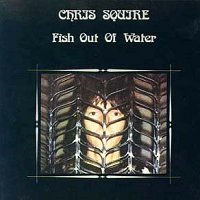 A highly acclaimed work from the Yes bass-player. "Fish Out of Water" shows Squire's talent both as a songwriter and as the marvellous instrumentalist he is. Listening to this album also reveals that his voice is just as important as Jon Anderson's in the vocal harmonies of Yes. Among the backing-musicians were people like Bill Bruford, Patrick Moraz and Mel Collins. There are also some orchestral arrangements on several of the songs. It's not hard to hear here what band Squire usually played in, but he still managed to give the album a sound of its own. The opening track "Hold Out Your Hand" is a catchy tune with some church-like organ and Squire's superb bass-playing loud and clear in the sound. "You by My Side" features a tasty flute solo in the middle by Jimmy Hastings. Things get real serious with the 10-minute epic "Silently Falling". A really powerful progressive rock track in the Yes-vein, but with a different feel. "Lucky Seven" is more down to earth with some very slight jazz-influences. The most ambitious piece on the whole album is the 15-minute suite "Safe (Canon Song)". This very symphonic track features several grandiose orchestral themes that evolve around Squire's impressive and often unusual and experimental use of his bass. Very impressive stuff and a real treat for Yes-fans. A highly acclaimed work from the Yes bass-player. "Fish Out of Water" shows Squire's talent both as a songwriter and as the marvellous instrumentalist he is. Listening to this album also reveals that his voice is just as important as Jon Anderson's in the vocal harmonies of Yes. Among the backing-musicians were people like Bill Bruford, Patrick Moraz and Mel Collins. There are also some orchestral arrangements on several of the songs. It's not hard to hear here what band Squire usually played in, but he still managed to give the album a sound of its own. The opening track "Hold Out Your Hand" is a catchy tune with some church-like organ and Squire's superb bass-playing loud and clear in the sound. "You by My Side" features a tasty flute solo in the middle by Jimmy Hastings. Things get real serious with the 10-minute epic "Silently Falling". A really powerful progressive rock track in the Yes-vein, but with a different feel. "Lucky Seven" is more down to earth with some very slight jazz-influences. The most ambitious piece on the whole album is the 15-minute suite "Safe (Canon Song)". This very symphonic track features several grandiose orchestral themes that evolve around Squire's impressive and often unusual and experimental use of his bass. Very impressive stuff and a real treat for Yes-fans.
Next Page

|